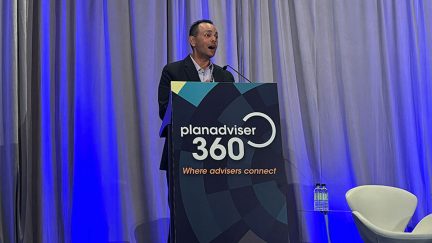Never miss a story — sign up for PLANADVISER newsletters to keep up on the latest retirement plan adviser news.
Defined Contribution in Transition
That was the over-arching theme of the discussion on a recent JP Morgan Asset Management Web cast that analyzed changing trends in the DC market in the wake of the economic crisis. According to the Web cast, there are several areas of the DC plan that need focus.
One of those areas is the use of auto-enrollment. Auto-enrollment itself is not new–but the way employers are using it is starting to change. Many auto-enrollment plans currently have the deferment rates set to 6% or lower. But, according to David Musto, head of Defined Contribution Investment Solutions at J.P. Morgan Asset Management, that percentage is far from substantial. Plans with an auto-enrollment starting at less than 6% will take a long time to reach 10% deferment, making it very unlikely that retirement goals will be reached. Therefore, plan sponsors and advisers need to start designing plans that either have a higher auto-enrollment rate, or an auto-escalation that increases faster.
In addition to stronger auto-enrollment and auto-escalation features, plan sponsors and advisers should be reassessing their investment strategies. Musto told PLANADVISER that many plans are offering too many fund choices without the sponsors or participants fully understanding the risks involved. He said that sponsors and advisers need to “streamline the core menu” of funds and analyze how they work together, aim for style purity, consider the downside risk, and how the different funds might complement each other. He also said that while plans used to focus on “hot” performing funds, the focus now needs to be on performance consistency, style purity, and portfolio quality.
Another trend in the DC market that continues to grow in popularity is guaranteed income products. Many of these products are still in their infancy but, according to Musto, they have potential to solve serious issues surrounding longevity concerns. He pointed to in-plan annuities–Musto believes these can be an excellent solution, but there are at least two barriers that need to be dealt with:
- Portability. Will participants be able to move the investment if they change employers, and will the sponsors be able to move it if they change recordkeepers?
- The sponsors fearing the fiduciary role that would go along with a lifetime annuity plan. Musto said the government will have to issue more guidelines on that before sponsors are comfortable including the option in their plans.
Musto said that J.P. Morgan Asset Management recommends using personalized income replacement calculations on participants’ statement. He said that when participants saw how short they are falling from goals, J.P. Morgan saw improvements in income projections improve by 24% over a five years span based on participant actions.
You Might Also Like:

Plan Sponsors Remain Focused on Workforce Retirement Benefits

How to Establish Better Decumulation Options for Future DC Plans
